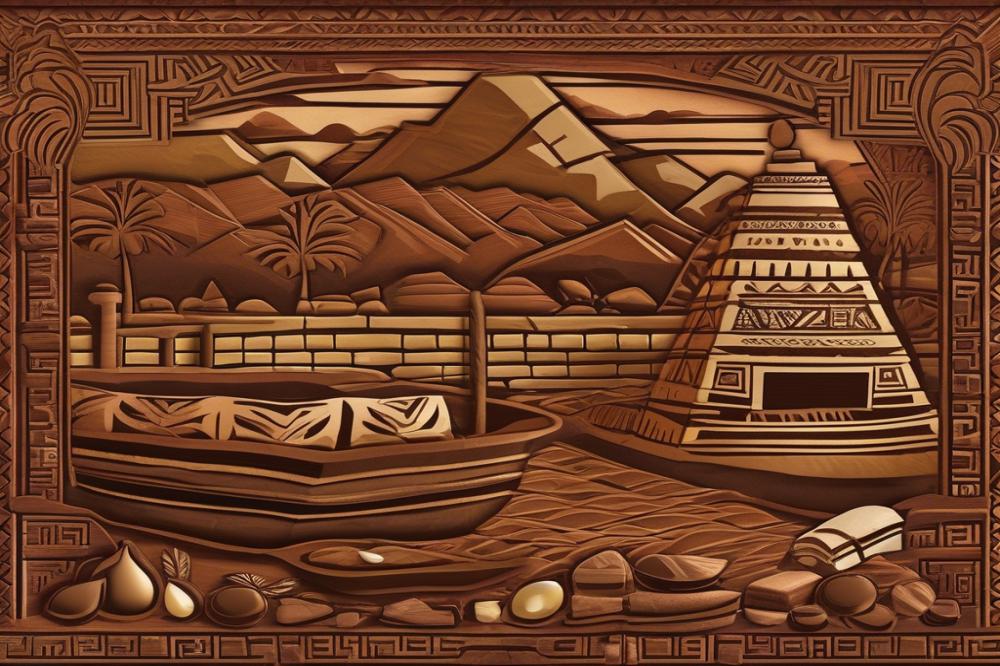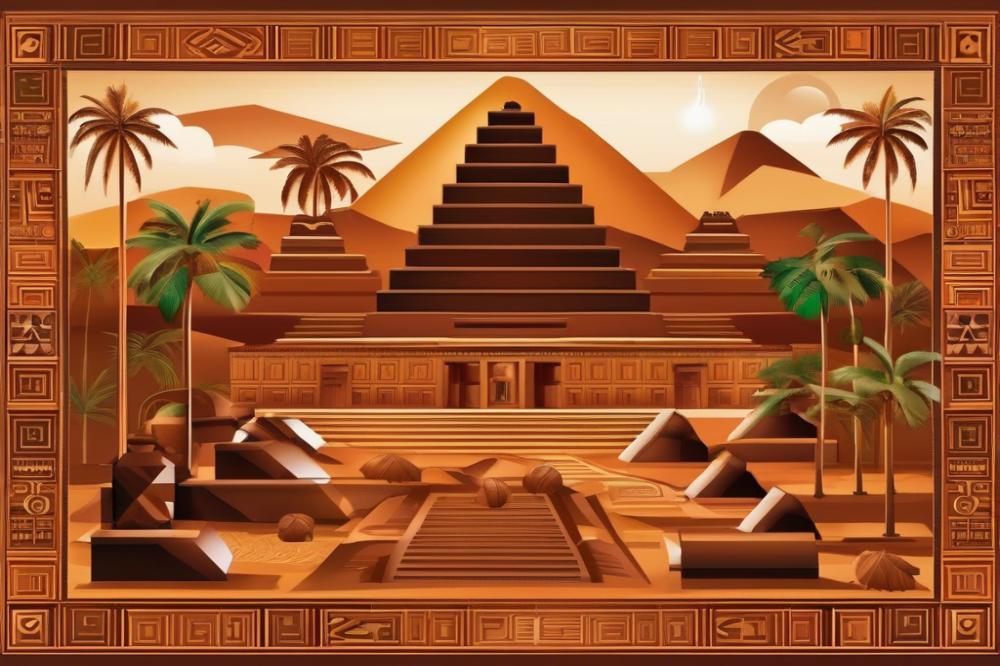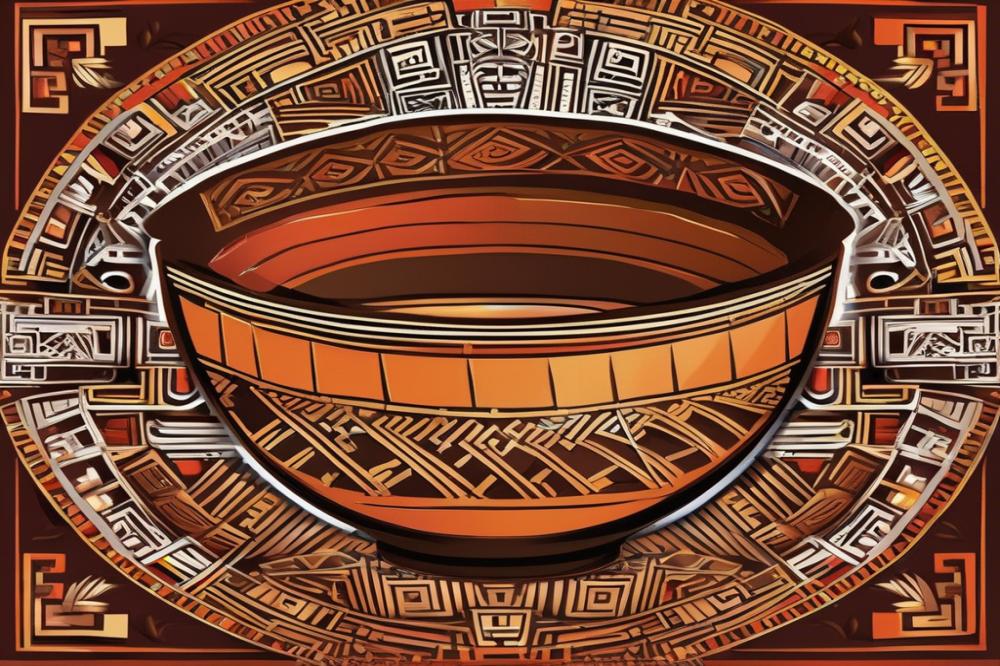Introduction
Chocolate has a rich history woven deeply into the fabric of Mesoamerican cultures. For the Aztecs and Mayans, cacao was more than just a food item; it held immense significance in their daily lives and spiritual practices. This ancient beverage symbolized wealth and social status, even transcending into religious rituals.
Cacao beans originated in what is now known as ancient Mexico and parts of South America. The Mayans are believed to have been among the first to cultivate and use cacao, treating it as a precious resource. They cherished the beans for both their flavor and economic value, often using them as currency. Historical accounts suggest that the Aztecs, too, revered cacao, particularly as a base for their Chocolate drinks.
Daily life in these societies often revolved around the cultivation and preparation of cacao. Fermentation and grinding were essential parts of the traditional techniques used to create these beverages. Preparation was meticulous, and the notes of the cacao were enhanced with spices and other ingredients. Rituals involving this drink underscored its importance, where it was used in ceremonies and offerings to gods.
In summary, chocolate’s significance in Pre-Columbian Mexico extends far beyond its delightful taste. It played a vital role in shaping social structures and cultural practices. The legacy of cacao continues to influence our appreciation of chocolate today.
Historical Context

Origins of Cacao Cultivation in Pre-Columbian Mexico
Cacao has deep roots in Mesoamerican history. Its cultivation began thousands of years ago. The earliest evidence suggests that cacao was used by ancient cultures as far back as 1500 BC. This plant thrived in the warm climates of Central America. Farmers tended to cacao trees, nurturing them for their prized beans. These beans were not just food; they held significant cultural value. As time passed, the cultivation spread throughout the region, laying the groundwork for future traditions.
Role of the Mayans and Aztecs in Chocolate Production
The Mayans were among the first to transform cacao into a beverage. They used traditional techniques like fermentation and grinding to prepare this drink. For the Mayans, cacao was more than just a treat. It played a vital role in their rituals and daily life. Later, the Aztecs adopted these practices, viewing cacao as a symbol of prosperity. They had strict control over cacao production. The beans were so valuable that they even served as currency. Both cultures recognized the importance of cacao in their societies.
Chocolate as a Symbol of Wealth and Power
Cacao represented status among the elite. Only the wealthy could afford to enjoy the special drink made from cacao beans. It was served at important ceremonies and gatherings. The higher one’s social standing, the better access to this revered beverage. Additionally, the Aztecs believed that Tlaloc, the rain god, gifted them cacao, further enhancing its importance. Cacao beans adorned the rituals of both the Mayans and Aztecs, strengthening their cultural identity. The history of cacao is intertwined with the rise and fall of these ancient civilizations.
Traditional Techniques of Chocolate Making

The ancient Mesoamerican cultures, particularly the Mayans and Aztecs, had rich traditions surrounding the processing of cacao. First, they needed to harvest the cacao pods, which grow on trees. Inside these pods, the cacao beans were nestled in a sweet, sticky pulp. After collection, the initial step was to ferment the beans. This fermentation process enhanced the flavor, helping to develop the complex tastes associated with the final product. Each culture had its own methods, but they all agreed that fermentation was vital.
Once fermented, the beans would be dried under the sun. After drying, grinding was next. Traditional techniques involved the use of metates, which are stone tools. The beans were crushed against the metate’s surface using a heavy tool known as a mano. This grinding not only broke the beans into smaller pieces but also released oils, creating a smooth paste. This process required strength and skill, as the finer the grind, the better the beverage.
To create the final drink, the ground cacao would be mixed with water, spices, and sometimes honey. This liquid was much different from the sweet chocolate drinks we enjoy today. It was often bitter and served at important rituals or gatherings. Some mayans infused it with chili, while the Aztecs preferred vanilla or other flavors derived from local plants. Each preparation reflected the distinctive regional trade and ingredients.
The creation of this beverage was not only about taste. It carried deep cultural significance. The drink was often associated with various rituals, including religious ceremonies and social occasions. Understanding these traditional techniques of cacao processing gives us insight into the intricate history of chocolate in Mesoamerican civilizations. The legacy of these ancient methods continues to inspire modern chocolate-making practices today.
Rituals and Cultural Significance
In Mesoamerican societies, the use of cacao went far beyond simple enjoyment. It found its place in religious and cultural rituals. The Aztecs and Mayans viewed it as a divine gift. Many believed that the gods had bestowed these precious beans upon them. Thus, preparing and consuming the beverage became an important aspect of their spiritual lives.
This beverage was often served during significant ceremonies. It played a role in weddings, funerals, and various festivals. Celebrants would include it in rituals to honor deities or mark important occasions. The rich, thick drink represented not just nourishment, but a connection to the divine. It was a way to bridge the gap between the earthly and the sacred.
Moreover, cacao had a lofty status as a luxury item. The process of fermentation and grinding the beans required much skill. Only a few had the right knowledge to transform cacao into the celebrated beverage. This expertise elevated certain individuals within the community. People reserved the drink for the elite, as it reflected wealth and power. Serving it at gatherings showcased both hospitality and social standing.
The connection between community and cacao ran deep. Sharing this beverage during special moments strengthened bonds. It was often consumed in groups, fostering communication and unity. The act of sharing transcended mere consumption; it emphasized relationships, trust, and mutual respect. Those who indulged in the beverage signified their place within a broader social network.
The history of cacao as a ritualistic element also extends to traditional techniques of preparation. Each culture had its methods, reflecting their values and beliefs. The Aztecs and Mayans each developed distinct recipes and practices. These variations highlighted their diverse identities, culture, and traditions. Thus, cacao was more than just a commodity in their worlds; it was a vital thread woven into the fabric of everyday life.
Impact of Chocolate on Modern Culture
Influence of Pre-Columbian chocolate-making techniques on contemporary practices
Pre-Columbian cultures, especially the Aztec and Mayan, had a major influence on how we make chocolate today. Their methods, such as grinding cacao beans and fermenting them, laid the groundwork for modern chocolate production. This heritage continues to resonate. Many artisanal chocolate makers today still use traditional techniques. These practices often highlight the importance of quality and taste. Unlike mass production, they focus on the unique flavors that come from carefully sourced cacao. This connection to history makes every bite more meaningful.
Continuation of traditional rituals and their relevance today
Rituals surrounding chocolate have not vanished. In many cultures, these traditions persist, bringing communities together. Ceremonial drinks were once central to Mesoamerican life, serving both religious and social purposes. Today, people explore these traditions through events, festivals, and workshops. The enjoyment of chocolate can still carry a sense of ritual. Many families create their own customs, passing on stories and practices. This ongoing connection enriches modern experiences with a profound sense of history.
Chocolate’s evolution and globalization of its consumption
Over the centuries, cacao has transformed from a sacred beverage to a global delight. The introduction of sugar significantly changed its taste and appeal. Eventually, chocolate became a favorite treat around the world. This transition reflects changing societal values and preferences. Today, chocolate is more than just a snack. It is a cultural symbol. People celebrate it with holidays, gifts, and even art. The globalization of its consumption has made it accessible to countless individuals. Despite its widespread availability, the essence of its rich history remains vital. Chocolate connects us to the past, while continually evolving into new forms.
Final Thoughts
The significance of cacao in Pre-Columbian Mexico cannot be overstated. It played a vital role not only in daily life but also in rituals and social interactions. The ancient Mesoamerican peoples used chocolate in ceremonies, showcasing its sacred status. This drink was more than a simple pleasure; it was a symbol of wealth and power, often reserved for the elite.
Many techniques from this time have greatly influenced modern chocolate production. The processes of grinding cacao beans and mixing flavors have evolved but still carry echoes of traditional methods. Today’s artisans often echo the past, emphasizing quality and craftsmanship. This connection to history enriches the experience of enjoying chocolate.
Chocolate does not merely exist in isolation, nor is its appeal limited to Mexico. Its journey across continents has allowed it to become an integral part of global culture. Today, people across the world celebrate its diverse flavors and forms. From simple bars to elaborate desserts, the lasting impact of ancient traditions remains clear.
As we enjoy chocolate today, we connect with a rich heritage. This story emphasizes the blend of cultural history and modern enjoyment. It reminds us that even a simple treat carries layers of meaning and significance.



